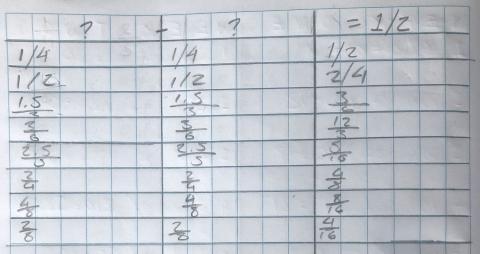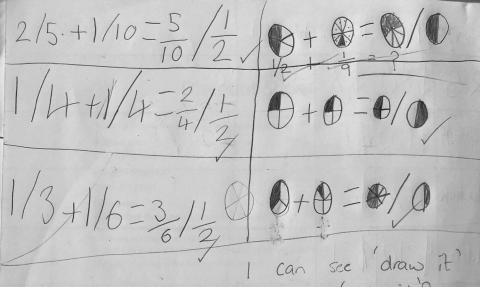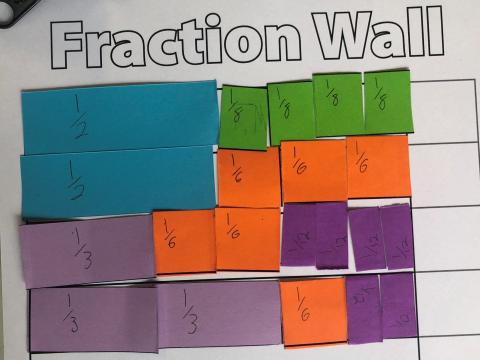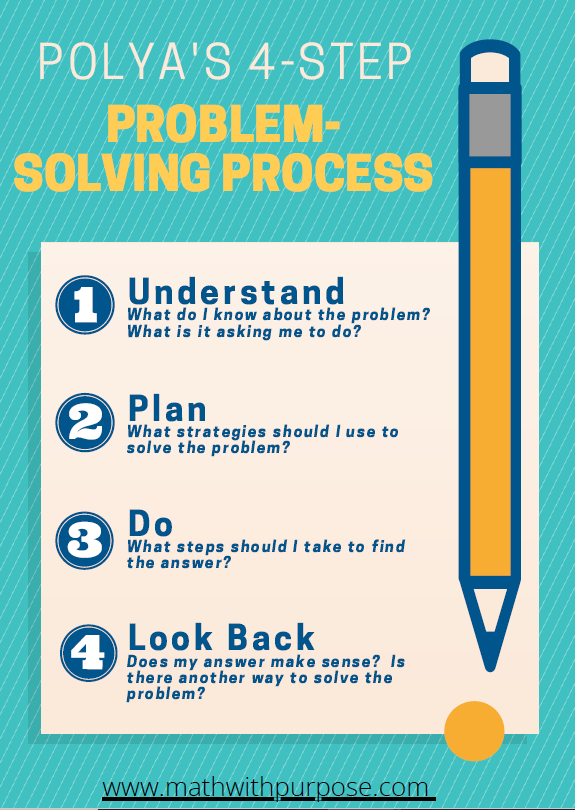Four Steps of Polya's Problem Solving Techniques
Related tags:
In the world of mathematics and algorithms, problem-solving is an art which follows well-defined steps. Such steps do not follow some strict rules and each individual can come up with their steps of solving the problem. But there are some guidelines which can help to solve systematically.
In this direction, mathematician George Polya crafted a legacy that has guided countless individuals through the maze of problem-solving. In his book “ How To Solve It ,” Polya provided four fundamental steps that serve as a compass for handling mathematical challenges.
- Understand the problem
- Devise a Plan
- Carry out the Plan
- Look Back and Reflect
Let’s look at each one of these steps in detail.

Polya’s First Principle: Understand the Problem
Before starting the journey of problem-solving, a critical step is to understand every critical detail in the problem. According to Polya, this initial phase serves as the foundation for successful solutions.
At first sight, understanding a problem may seem a trivial task for us, but it is often the root cause of failure in problem-solving. The reason is simple: We often understand the problem in a hurry and miss some important details or make some unnecessary assumptions. So, we need to clearly understand the problem by asking these essential questions:
- Do we understand all the words used in the problem statement?
- What are we asked to find or show? What is the unknown? What is the information given? Is there enough information to enable you to find a solution?
- What is the condition or constraints given in the problem? Separate the various parts of the condition: Is it possible to satisfy the condition? Is the condition sufficient to determine the unknown? Or is it insufficient? Or redundant? Or contradictory?
- Can you write down the problem in your own words? If required, use suitable notations, symbols, equations, or expressions to convey ideas and encapsulate critical details. This can work as our compass, which can guide us through calculations to reach the solution.
- After knowing relevant details, visualization becomes a powerful tool. Can you think of a diagram that might help you understand the problem? This can serve as a bridge between the abstract and tangible details and reveal patterns that might not be visible after looking at the problem description.
Just as a painter understands the canvas before using the brush, understanding the problem is the first step towards the correct solution.
Polya’s Second Principle: Devise a Plan
Polya mentions that there are many reasonable ways to solve problems. If we want to learn how to choose the best problem-solving strategy, the most effective way is to solve a variety of problems and observe different steps involved in the thought process and implementation techniques.
During this practice, we can try these strategies:
- Guess and check
- Identification of patterns
- Construction of orderly lists
- Creation of visual diagrams
- Elimination of possibilities
- Solving simplified versions of the problem
- Using symmetry and models
- Considering special cases
- Working backwards
- Using direct reasoning
- Using formulas and equations
Here are some critical questions at this stage:
- Can you solve a portion of the problem? Consider retaining only a segment of conditions and discarding the rest.
- Have you encountered this problem before? Have you encountered a similar problem in a slightly different form with the same or a similar unknown? Look closely at the unknown.
- If the proposed problem proves challenging, try to solve related problems first. Can you imagine a more approachable related problem? A more general or specialized version? Could you utilize their solutions, results, or methods?
- Can you derive useful insights from the data? Can you think of other data that would help determine the unknown? Did you utilize all the given data? Did you incorporate the entire set of conditions? Have you considered all essential concepts related to the problem?
Polya’s Third Principle: Carry out the Plan
This is the execution phase where we transform the blueprint of our devised strategy into a correct solution. As we proceed, our goal is to put each step into action and move towards the solution.
In general, after identifying the strategy, we need to move forward and persist with the chosen strategy. If it is not working, then we should not hesitate to discard it and try another strategy. All we need is care and patience. Don’t be misled, this is how mathematics is done, even by professionals. There is one important thing: We need to verify the correctness of each step or prove the correctness of the entire solution.
Polya’s Fourth Principle: Look Back and Reflect
In the rush to solve a problem, we often ignore learning from the completed solutions. So according to Polya, we can gain a lot of new insights by taking the time to reflect and look back at what we have done, what worked, and what didn’t. Doing this will enable us to predict what strategy to use to solve future problems.
- Can you check the result?
- Can you check the concepts and theorems used?
- Can you derive the solution differently?
- Can you use the result, or the method, for some other problem?
By consistently following the steps, you can observe a lot of interesting insights on your own.
George Polya's problem-solving methods give us a clear way of thinking to get better at math. These methods change the experience of dealing with math problems from something hard to something exciting. By following Polya's ideas, we not only learn how to approach math problems but also learn how to handle the difficult parts of math problems.
Shubham Gautam
Share on social media:
Don’t fill this out if you’re human:
More blogs to explore
Originated from the “Games of Chance,” probability in itself is a branch of mathematics concerned about how likely it is that a proposition is true.
There are 3 doors behind which are two goats and a car. You pick door 1 hoping for the car but don’t open it right away. Monty Hall, the game show host who knows what's behind the doors, opens door 3, which has a goat. Here's the game: do you want to pick door No. 2? Is it to your advantage to switch your choice?
A cube is painted with some color on all faces. Now, we cut it into 1000 small cubes of equal size. How many small cubes are painted?
Given two non-negative integers, m and n, we have to find their greatest common divisor or HCF. It is the largest number, a divisor of both m and n. The Euclidean algorithm is one of the oldest and most widely known methods for computing the GCD of two integers.
This is one of the basic problems to learn the properties of prime numbers and the divisibility rule. There could be several variations and several ideas of proof available to this question.
The Probability distribution lists the probabilities of the events that happened in any given random experiment. For example rolling a dice.
Follow us on:
© 2020 Code Algorithms Pvt. Ltd.
All rights reserved.
- Resources library
Polya’s Problem-Solving Process
Emma Moore, Teaching Excellence Program Master Teacher
Problem-solving skills are crucial for students to navigate challenges, think critically, and find innovative solutions. In PISA, problem-solving competence is defined as “an individual’s capacity to engage in cognitive processing to understand and resolve problem situations where a method of solution is not immediately obvious” (OECD, 2014, p. 30). Returning to the classroom post-COVID, I found that students had lost their ‘grit’ for these deep-thinking tasks. They either struggled to start, gave up easily, or stopped at their first ‘answer’ without considering if it answered the problem or was the only possible solution.
To re-invigorate these skills, I investigated the impact of explicitly teaching Polya's problem-solving process in my Year Six class. This framework developed student agency and supported them to manage their feelings if they felt challenged by the work.
Here, I will share the impact of this initiative and how it empowered students to become effective and resilient problem solvers.
Understanding Polya's Problem-Solving Process
Polya's problem-solving process, developed by mathematician George Polya, provides a structured approach to problem-solving that can be applied across various domains. This four-step process consists of understanding the problem, devising a plan, trying the plan, and revisiting the solution. (Polya, 1947)
In order to focus on the skills and knowledge of the problem-solving process, I began by using tasks where the mathematical processes were obvious. This allowed me to focus on the problem-solving process explicitly.
The question shown in Figure 2 is taken from Peter Sullivan and Pat Lilburn's Open-Ended Maths Activities book. This task was used to establish a baseline assessment for each stage of the process. I planned the prompts in dot points and revealed them one by one through the PowerPoint. After launching the task and giving the students time to think, they recorded all their possible answers in their workbook.

The student sample shown in Figure 3 demonstrates that the student followed a pattern and stuck to it but did not revisit their work. On line two, their response (1 half and 1 half is 2 quarters) is unreasonable.

Figure 3 is a sample gathered from a small group of students. This group required support to start. They used paper folding and paper strips to model their thinking.
Over half of the class could give at least one correct answer, but only four students showed signs of checking to see if their plans addressed the problem and yielded correct answers. Understanding the problem and revisiting the solutions became the focus of my inquiry.
The following series of lessons covering operations with fractions and decimals focused on the stages of Polya’s process.
Step 1: Understanding the Problem
The first step of Polya's problem-solving process emphasises the importance of ensuring you thoroughly comprehend the problem. In this step, students learn to read and analyse the problem statement, identify the key information, and clarify any uncertainties. This process encourages critical thinking (Bicer et al., 2020) as students develop the ability to break down complex problems into manageable parts. I facilitated this process by engaging students in discussions and guiding them to identify the essential components of the problem. By fostering a collaborative learning environment, students shared their perspectives and learned to refine their questions when they were unsure. Figure 6 shares an example of a prompt I use for Step 1.
Figure 4: Example prompt for Step 1.
Initially, students who were stuck provided the classic ‘white flag’ responses.
Student: I just don’t get it.
Teacher: What part don’t you get?
Student: All of it!
As a starting point, the students and I co-created a classroom display of helpful questions the students could use to develop their understanding.
These questions supported me to develop a deeper understanding of what students didn’t understand when they expressed uncertainty. This could range from not understanding specific terminology (often easy to explain) to where numbers came from and why their classmates interpreted the problem differently. I found engaging in this step made triaging their misunderstandings easier.

Step 2: Devising a Plan
Once students had grasped the problem, the next step was to formulate a plan of action. In this step, students explored different strategies and selected the most appropriate approach. I prompted students to brainstorm possible solutions, draw diagrams, make tables, and create algorithms, all the time fostering creativity and diverse thinking.
This step had been a strength during the baseline assessment data, and a wide range of strategies were explored. Polya’s strategies were displayed in the classroom as the mathematician’s strategy tool kit, so students were comfortable acknowledging the many ways to solve the problem.
Students developed critical thinking and decision-making skills by keeping this step in problem-solving. They become adept at evaluating multiple approaches and selecting the most effective strategy to solve a problem, thus promoting the development of mathematical reasoning abilities (Barnes, 2021). Figure 7 shows a slide used in Step 2.
Figure 5: Example prompt for Step 2.
Step 3: Try
The students implemented their selected strategy, performed calculations, made models, drew diagrams, created tables, and found patterns. This stage encouraged students to persevere and take ownership of their problem-solving process.
At Cowes Primary School, we have developed whole-school expectations around providing opportunities for hands-on learning, allowing students to engage in practical activities that support the development of ideas, expecting students to represent their work visually (pictures, materials and manipulatives), using language and numbers/symbols. This approach enhances students' problem-solving skills and fosters a sense of autonomy and confidence in their capabilities and ability to talk about their work (Roche et al., 2023). Figure 9 shows the slide used for Step 3.
Figure 6: Example prompt for Step 3.
Step 4. Re-visiting the solution
The last step in Polya's problem-solving process is re-visit. After finding a solution, students critically analyse and evaluate their approach after finding a solution. They consider the effectiveness of their chosen strategy, identify strengths and weaknesses, and reflect on how they could improve their problem-solving techniques. This step was missing from most students’ work during the baseline assessment.
As a class, we added to the display questions to facilitate better reflective practice and developed a more critical approach to looking at our work. This process encouraged students to refine their answers, not go too far down the wrong path, fostered resilience, embrace challenge and normalise uncertainty (Buckley & Sullivan, 2023).
Figure 7: Class display showing our questions.

Figure 8: Student samples from the task.

Impact and Benefits:
Figure 9 shows four tasks, including the initial baseline assessment. The blue series shows the percentage of students who arrived at least one correct solution. The green series shows evidence that students were revisiting their initial solutions using other strategies to check they were correct or checking in with other groups and adjusting. There was a steady increase in both skills over the course of these four tasks.
By explicitly teaching Polya's problem-solving process, the students cultivated valuable skills that extend beyond maths problems. Some of the key benefits observed were:
Mathematical Reasoning: Polya's process promotes the development of mathematical reasoning skills. Students analysed problems, explored different strategies, and apply logical thinking to arrive at solutions. These skills can enhance their overall mathematical proficiency.
Self-efficacy: Through problem-solving, students gained confidence in their ability to tackle problems. They become more self-reliant, taking ownership of their learning, and seeking solutions proactively.
Collaboration and Communication: The process encouraged collaboration and communication among students. They discussed problems, shared ideas, and considered multiple perspectives, students developed effective teamwork and interpersonal skills.
Metacognition: The reflective aspect of Polya's process fostered metacognitive skills, enabling students to monitor and regulate their thinking processes. They learned to identify their strengths and weaknesses, supporting continuous improvement and growth.
Overall using the 4 steps was a really effective and an explicit way to focus on developing the problem-solving skills of my Year 6 students.
This article was originally published for the Mathematical Association of Victoria's Prime Number.
References:
Barnes, A. (2021). Enjoyment in learning mathematics: Its role as a potential barrier to children’s perseverance in mathematical reasoning. Educational Studies in Mathematics , 106(1), 45–63. https://doi.org/10.1007/s10649-020-09992-x
Bicer, Ali, Yujin Lee, Celal Perihan, Mary M. Capraro, and Robert M. Capraro. ‘Considering Mathematical Creative Self-Efficacy with Problem Posing as a Measure of Mathematical Creativity’. Educational Studies in Mathematics 105, no. 3 (November 2020): 457–85. https://doi.org/10.1007/s10649-020-09995-8
Buckley, S., & Sullivan, P. (2023). Reframing anxiety and uncertainty in the mathematics classroom. Mathematics Education Research Journal , 35(S1), 157–170. https://doi.org/10.1007/s13394-021-00393-8
OECD (Ed.). (2014). Creative problem solving: Students’ skills in tackling real-life problems. OECD.
Pólya, G. (1988). How to solve it: A new aspect of mathematical method (2nd ed). Princeton university press.
Roche, A., Gervasoni, A., & Kalogeropoulos, P. (2023). Factors that promote interest and engagement in learning mathematics for low-achieving primary students across three learning settings. Mathematics Education Research Journal , 35(3), 525–556. https://doi.org/10.1007/s13394-021-00402-w

- school Campus Bookshelves
- menu_book Bookshelves
- perm_media Learning Objects
- login Login
- how_to_reg Request Instructor Account
- hub Instructor Commons
Margin Size
- Download Page (PDF)
- Download Full Book (PDF)
- Periodic Table
- Physics Constants
- Scientific Calculator
- Reference & Cite
- Tools expand_more
- Readability
selected template will load here
This action is not available.

2.1: George Polya's Four Step Problem Solving Process
- Last updated
- Save as PDF
- Page ID 132871
\( \newcommand{\vecs}[1]{\overset { \scriptstyle \rightharpoonup} {\mathbf{#1}} } \)
\( \newcommand{\vecd}[1]{\overset{-\!-\!\rightharpoonup}{\vphantom{a}\smash {#1}}} \)
\( \newcommand{\id}{\mathrm{id}}\) \( \newcommand{\Span}{\mathrm{span}}\)
( \newcommand{\kernel}{\mathrm{null}\,}\) \( \newcommand{\range}{\mathrm{range}\,}\)
\( \newcommand{\RealPart}{\mathrm{Re}}\) \( \newcommand{\ImaginaryPart}{\mathrm{Im}}\)
\( \newcommand{\Argument}{\mathrm{Arg}}\) \( \newcommand{\norm}[1]{\| #1 \|}\)
\( \newcommand{\inner}[2]{\langle #1, #2 \rangle}\)
\( \newcommand{\Span}{\mathrm{span}}\)
\( \newcommand{\id}{\mathrm{id}}\)
\( \newcommand{\kernel}{\mathrm{null}\,}\)
\( \newcommand{\range}{\mathrm{range}\,}\)
\( \newcommand{\RealPart}{\mathrm{Re}}\)
\( \newcommand{\ImaginaryPart}{\mathrm{Im}}\)
\( \newcommand{\Argument}{\mathrm{Arg}}\)
\( \newcommand{\norm}[1]{\| #1 \|}\)
\( \newcommand{\Span}{\mathrm{span}}\) \( \newcommand{\AA}{\unicode[.8,0]{x212B}}\)
\( \newcommand{\vectorA}[1]{\vec{#1}} % arrow\)
\( \newcommand{\vectorAt}[1]{\vec{\text{#1}}} % arrow\)
\( \newcommand{\vectorB}[1]{\overset { \scriptstyle \rightharpoonup} {\mathbf{#1}} } \)
\( \newcommand{\vectorC}[1]{\textbf{#1}} \)
\( \newcommand{\vectorD}[1]{\overrightarrow{#1}} \)
\( \newcommand{\vectorDt}[1]{\overrightarrow{\text{#1}}} \)
\( \newcommand{\vectE}[1]{\overset{-\!-\!\rightharpoonup}{\vphantom{a}\smash{\mathbf {#1}}}} \)
Step 1: Understand the Problem
- Do you understand all the words?
- Can you restate the problem in your own words?
- Do you know what is given?
- Do you know what the goal is?
- Is there enough information?
- Is there extraneous information?
- Is this problem similar to another problem you have solved?
Step 2: Devise a Plan: Below are some strategies one might use to solve a problem. Can one (or more) of the following strategies be used? (A strategy is defined as an artful means to an end.)

- Jul 5, 2021
Problem-Solving Steps that Actually Work
Updated: Mar 6, 2023
Whenever our students encounter problems, it can be a tricky situation. On one hand, I get super excited about the idea of my students THINKING about everything they know to solve the problem. I love watching their brains work while they access that filing cabinet in their brain of math information and pull out the information to solve a challenging problem.
On the other hand, that same process can become a brick wall when it becomes too overwhelming. Students can shut down and refuse to move. They can cry and become frustrated. These same students can then begin believing they are just not good at math from this point forward.
That's a lot of pressure from a simple math problem.
If you haven't read Jo Boaler's Mathematical Mindsets, I strongly suggest it as a way to begin helping our students see math learning with a growth mindset. It's a helpful guide in teaching our students and ourselves that knowledge is something that grows and is not fixed. It is based on Carol Dweck's work with Growth Mindsets from Mindset: The New Psychology of Success . (Another great read in helping children as a parent, teacher or coach.)
So what do we do? Instead of bombarding our students with several strategies to make problem-solving easier, I think it's important to boil it down to the basics. What strategies can I give my students that help them with all problems? What's something that's easy for them to remember and recall? What's something that would give them confidence moving forward?

Enter in Polya's Problem-Solving Method by George Polya who was known as the father of problem solving. These four steps sum up everything our students need to solve problems successfully. They are easy to remember and easy to implement.
(This post does contain affiliate links.)
Understand the Problem: This is the focus on comprehension. What is the problem asking me to do? What do I know from reading the problem? What can I comprehend?
Plan: This is the time where students think about how they want to move forward. Before solving with mathematics, we want our students to determine what steps they should take.
Solve : This is where students do the math. They follow the steps in their plan and work out the problem.
Look Back: Now we want students to look back and see that their answer makes sense. We want them to check the answer using estimation or even by trying to solve it in another way.
Four steps...that's totally manageable right? I love the simplicity of it all and even find that it carries over to all aspects of our life when solving real-life problems.
Now that students have a way to solve problems, it's time to give them the tools to make a plan that will work. I've been talking about Singapore's heuristics in my Member's Facebook group, and I wanted to share some of those with you. Stay tuned in the next few weeks to learn about the heuristics and how these strategies help students determine a meaningful plan to solve problems.
In the meantime, be sure to grab your problem-solving poster by clicking below!
- K-2 Free Math Resources
- Grades 3-6 Free Math Resources
Recent Posts
Great Big List of Math Literature
Math Literature: Goodnight Numbers and a Digital Freebie
Math Literature: The Action of Subtraction
Thanks for submitting!

IMAGES
VIDEO
COMMENTS
Polya's 4-Step Process. George Polya was a mathematician in the 1940s. He devised a systematic process for solving problems that is now referred to by his name: the Polya 4-Step Problem-Solving ...
Is this problem similar to another problem you have solved? Step 2: Devise a Plan: Below are some strategies one might use to solve a problem. Can one (or more) of the following strategies be used? (A strategy is defined as an artful means to an end.) 1.
Before starting the journey of problem-solving, a critical step is to understand every critical detail in the problem. According to Polya, this initial phase serves as the foundation for successful solutions. At first sight, understanding a problem may seem a trivial task for us, but it is often the root cause of failure in problem-solving.
The four steps of the Polya method are as follows: Understand the problem. Devise a plan. Carry out the plan. Evaluate the solution. Let's take a closer look at each step. Step 1: Understand the ...
Carry out the plan: Spend a reasonable amount of time trying to solve the problem using your plan. If you are not successful, go back to step 2. If you run out of strategies, go back to step 1. If you still don't have any luck, talk the problem over with a classmate. Look back: After you have a proposed solution, check your solution out.
To begin this task, we now discuss a framework for thinking about problem solving: Polya's four-step approach to problem solving. Polya's four-step approach to problem solving 1. Preparation: Understand the problem Learn the necessary underlying mathematical concepts Consider the terminology and notation used in the problem: 1.
This four-step process consists of understanding the problem, devising a plan, trying the plan, and revisiting the solution. (Polya, 1947) In order to focus on the skills and knowledge of the problem-solving process, I began by using tasks where the mathematical processes were obvious. This allowed me to focus on the problem-solving process ...
Welcome! In this video, we explore Polya's four-step approach to problem-solving. From understanding the problem to reflecting on the solution, these steps w...
1. a) Act out the following: There are five people in a group and each shakes hands with every person. How many handshakes take place in a group? b) Draw/diagram what took place and write down what each part of your diagrams represents. c) List the number of handshakes for groups of 5, 6, and 7. 2. a) Solve the following problem in your head ...
Polya's Four Phases of Problem Solving The following comes from the famous book by George Polya called How to Solve It. 1. Understanding the Problem. ... Carrying out your plan of the solution, check each step. Can you see clearly that the step is correct? Can you prove that it is correct? 4. Looking Back. Examine the solution obtained.
Math in the Modern World Playlist: https://www.youtube.com/watch?v=vb-hDOm3GzU&list=PLbZl6MGLeYnsoaxa2L-xouDPHcoe9z23x&index=3A more logical answer to 13:36 ...
Separate the various parts of the condition. Can you write them down? DEVISING A PLAN. Second. Find the connection between the data and the unknown. You may be obliged to consider auxiliary problems if an immediate connection cannot be found. You should obtain eventually a plan of the solution.
Explanation of Polya's Four Step problem solving technique. The four steps are explained in simple terms with an example of applying Polya's method.
POLYA'S FOUR STEP PROBLEM SOLVING METHOD - Henrik Bachmann
Intermediate Algebra Tutorial 8. Use Polya's four step process to solve word problems involving numbers, percents, rectangles, supplementary angles, complementary angles, consecutive integers, and breaking even. Whether you like it or not, whether you are going to be a mother, father, teacher, computer programmer, scientist, researcher ...
Step 3: Carry Out the Plan. After devising a plan, the next step is to carry it out. This involves following the plan you've created and solving the problem step by step. It's important to be ...
Polya's Problem Solving Techniques In 1945 George Polya published the book How To Solve It which quickly became his most prized publication. It sold over one million copies and has been translated ... This step is usually easier than devising the plan. In general, all you need is care and patience, given that you have the necessary skills ...
Can one (or more) of the following strategies be used? (A strategy is defined as an artful means to an end.) 1. Guess and test. 11. Solve an equivalent problem. 2. Use a variable. 12.
Plan: This is the time where students think about how they want to move forward. Before solving with mathematics, we want our students to determine what steps they should take. Solve: This is where students do the math. They follow the steps in their plan and work out the problem. Look Back: Now we want students to look back and see that their ...
The 4 steps in solving simple problems in mathematics is explained below.. According to the author called Polya created his famous four-step process for problem solving that one is used all over to aid people in problem solving. The first and foremost Step is to understand the problem which includes identification of the unknowns and figure out what the problem tells you is important and then ...
You can think about puzzles, games, estimations, pattern development. The main aim will be to develop strategies to solve problems. Generally a problem can be tackled in four steps according to Mr George Polya: Step 1: What is the problem. Step2: Make a plan. Step 3:Follow your plan. Step 4: Check your answer. Polya.
Pol ya's Four Steps in Probl em Sol ving. George Polya (1887-1985) was a Mathematics educator who strongly believed that the skill of problem-solving can be taught. He developed a framework known as Polya's Four Steps in Problem Solving. This process addresses the difficulty of students in problem-solving.